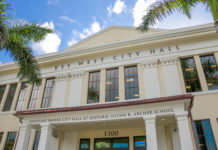By Ray West
In Key West, music is always in the air. On a short walk you can hear that sweet grit of blues slicing through the rhythmic tapestry of reggae, strains of acoustic guitar, impassioned vocals, country twang, refined jazz tones, and that guy on the sidewalk with a flute and a dog.
With that assortment comes a variety of players.
The life of a musician requires competence in a collection of skills unique to our industry. The type of jobs the majority of us go to everyday come with a set of requirements and well- documented responsibilities (yes, we see you smirking). As humans, we know it rarely works quite this succinctly, but we try.
With entertainment, even if we could all agree something is great, we don’t all like the same things.
If your toilet is broken, you call a plumber. If the plumber comes on time, neatly addresses your problem in a timely manner, and the toilet works great, we can usually all agree, good plumber.
If a great opera singer shows up to your party and you answer the door wearing your favorite death metal band’s T-shirt with its name written in an almost illegible font, well, opinions may vary on the opera singer.
Here in Key West, with the large variety of people standing next to each other in one room, finding the common ground among personal taste, cultural background, age, sex and the temperament of a crowd is an art in itself.
“I profile the audience by what they wear,” said Michelle Dravis, one of Key West’s premier rock and blues singers, “so if you don’t like what I play, you may need to rethink your wardrobe.”
Navigating this diversity, as well as playing your instrument, listening to your instrument, managing your foot pedals, giving the song the emotion it calls for, gauging audience reaction, listening to the other musicians on the stage, reacting to them and trying to communicate something to the person attempting to request a song from you while singing the lyrics to the song you happen to be playing at the moment – you see where I’m going with this.
Neuroscientists have learned that playing a musical instrument engages nearly all areas of the brain at once, especially the visual, audio and motor cortices, strengthening these areas for use in other situations. While improving problem-solving skills both academically and socially, practicing your instrument also enhances the ability to process information in real time from multiple sources at once.
I have said all that to say this: Learn to play an instrument. Even if you have decided you’re not musical. From bongos to French horn, from the adufo to the xylophone, spamjo canjo cigar box
to the hurdy gurdy, playing a musical instrument will help keep your brain fired up, your stress eased and your internal CPU linked in.
Let’s teach all our children to play instruments. Living in the future looks way more difficult as far as just sorting out junk from mail, and a set of real-time, problem-solving skills may serve us all better than a quick course in, “Kids, don’t do this because it’s bad” — a curriculum that rarely seems to work out well.























